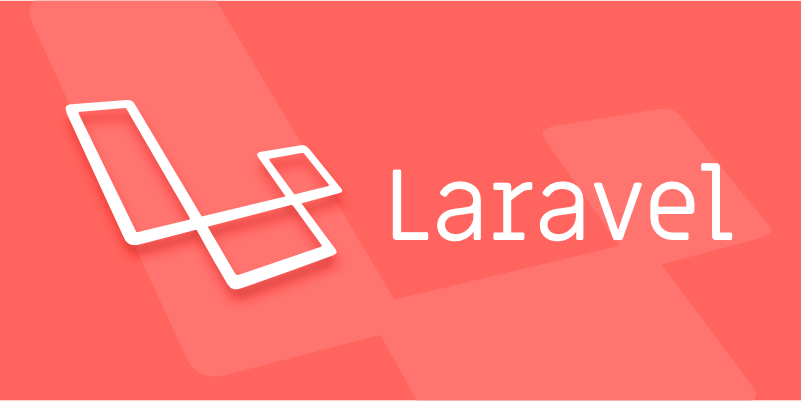Performing Eager Loading to Solve N 1 Problem in Laravel Eloquent?
Jul 10, 2025 pm 12:46 PMEager loading solves N 1 query problem by preloading the association model to reduce the number of database round trips. Use User::with('profile') to obtain user and its data information, and only two queries are required; multiple relationships such as with(['relation1', 'relation2']) and nested relationships such as with('posts.comments'); they should be applied when it is circulating through associated data to avoid overloading; relationships can be filtered through whereHas() and custom loading such as latest()->limit(1) can be achieved through constrained closures, thereby effectively optimizing performance.

When you're working with Laravel Eloquent and dealing with relationships, the N 1 query problem can seriously slow things down. The solution? Eager loading. It's not just a performance tweak—it's essential for keeping your app fast when handling relational data.

Here's how to use eager loading effectively in Laravel.

What is the N 1 Problem?
The N 1 issue pops up when you retrieve a list of models and then loop through them to access a related model. For example:
$users = User::all();
foreach ($users as $user) {
echo $user->profile->bio;
}In this case:

- First, it fetches all users (that's the 1).
- Then, for each user, it runs a separate query to get their profile (that's the N).
If you have 100 users, that becomes 101 queries. That's not scalable.
How Eager Loading Helps
Eager loading pulls related models upfront, reducing multiple queries into just a few. You do this using with() in your query:
$users = User::with('profile')->get();
Now, Laravel grabs all users and their related profiles in two queries—no matter how many users there are. That's efficient.
You can also eager load nested relationships:
User::with('profile.address')->get();
This works great if a profile has its own address relationship.
Some common patterns:
-
with(['relation1', 'relation2'])– for multiple relationships - Nested relations like
with('posts.comments')– for deeper structures
When to Use Eager Loading
Use eager loading whenever you know you'll be accessing related data inside a loop . If you're fetching a list and then accessing a relationship on each item, eager loading is the way to go.
But don't overdo it:
- Only load what you need.
- Don't eager load for every possible relationship "just in case"—it defeats the purpose.
Also, consider conditional eager loading:
User::when($needsProfile, function ($query) {
return $query->with('profile');
})->get();This helps avoid unnecessary database hits when certain relationships aren't always needed.
Avoiding Common Mistakes
One mistake people make is forgetting that with() doesn't filter results by the relationship. If you want to filter based on a relationship, use whereHas() :
// Get users who have at least one post $users = User::whereHas('posts')->get();
Another trap: trying to eager load dynamic or computed properties that aren't actual relationships. Those won't work with() . You might need to use append() or accessors instead.
Also, remember that eager loads all related records. If you only need one, like the latest post per user, you might want to define a custom constrained eager load:
User::with(['posts' => function ($query) {
$query->latest()->limit(1);
}])->get(); Keep in mind that limit() in this context may behave differently depending on your database setup. It's not always foolproof across all drivers.
Wrap-Up
Eager loading is a core part of optimizing Laravel Eloquent queries. It cuts down on the number of round trips to the database and keeps your application snappy, especially when looping through large datasets.
Use with() wisely, understand when to filter using whereHas() , and don't fall into the trap of loading more than necessary.
It's not magic—but it makes a big difference once you get used to watching for those extra queries.
The above is the detailed content of Performing Eager Loading to Solve N 1 Problem in Laravel Eloquent?. For more information, please follow other related articles on the PHP Chinese website!

Hot AI Tools

Undress AI Tool
Undress images for free

Undresser.AI Undress
AI-powered app for creating realistic nude photos

AI Clothes Remover
Online AI tool for removing clothes from photos.

Clothoff.io
AI clothes remover

Video Face Swap
Swap faces in any video effortlessly with our completely free AI face swap tool!

Hot Article

Hot Tools

Notepad++7.3.1
Easy-to-use and free code editor

SublimeText3 Chinese version
Chinese version, very easy to use

Zend Studio 13.0.1
Powerful PHP integrated development environment

Dreamweaver CS6
Visual web development tools

SublimeText3 Mac version
God-level code editing software (SublimeText3)
 Working with pivot tables in Laravel Many-to-Many relationships
Jul 07, 2025 am 01:06 AM
Working with pivot tables in Laravel Many-to-Many relationships
Jul 07, 2025 am 01:06 AM
ToworkeffectivelywithpivottablesinLaravel,firstaccesspivotdatausingwithPivot()orwithTimestamps(),thenupdateentrieswithupdateExistingPivot(),managerelationshipsviadetach()andsync(),andusecustompivotmodelswhenneeded.1.UsewithPivot()toincludespecificcol
 Sending different types of notifications with Laravel
Jul 06, 2025 am 12:52 AM
Sending different types of notifications with Laravel
Jul 06, 2025 am 12:52 AM
Laravelprovidesacleanandflexiblewaytosendnotificationsviamultiplechannelslikeemail,SMS,in-appalerts,andpushnotifications.Youdefinenotificationchannelsinthevia()methodofanotificationclass,andimplementspecificmethodsliketoMail(),toDatabase(),ortoVonage
 Strategies for optimizing Laravel application performance
Jul 09, 2025 am 03:00 AM
Strategies for optimizing Laravel application performance
Jul 09, 2025 am 03:00 AM
Laravel performance optimization can improve application efficiency through four core directions. 1. Use the cache mechanism to reduce duplicate queries, store infrequently changing data through Cache::remember() and other methods to reduce database access frequency; 2. Optimize database from the model to query statements, avoid N 1 queries, specifying field queries, adding indexes, paging processing and reading and writing separation, and reduce bottlenecks; 3. Use time-consuming operations such as email sending and file exporting to queue asynchronous processing, use Supervisor to manage workers and set up retry mechanisms; 4. Use middleware and service providers reasonably to avoid complex logic and unnecessary initialization code, and delay loading of services to improve startup efficiency.
 Managing database state for testing in Laravel
Jul 13, 2025 am 03:08 AM
Managing database state for testing in Laravel
Jul 13, 2025 am 03:08 AM
Methods to manage database state in Laravel tests include using RefreshDatabase, selective seeding of data, careful use of transactions, and manual cleaning if necessary. 1. Use RefreshDatabasetrait to automatically migrate the database structure to ensure that each test is based on a clean database; 2. Use specific seeds to fill the necessary data and generate dynamic data in combination with the model factory; 3. Use DatabaseTransactionstrait to roll back the test changes, but pay attention to its limitations; 4. Manually truncate the table or reseed the database when it cannot be automatically cleaned. These methods are flexibly selected according to the type of test and environment to ensure the reliability and efficiency of the test.
 Choosing between Laravel Sanctum and Passport for API authentication
Jul 14, 2025 am 02:35 AM
Choosing between Laravel Sanctum and Passport for API authentication
Jul 14, 2025 am 02:35 AM
LaravelSanctum is suitable for simple, lightweight API certifications such as SPA or mobile applications, while Passport is suitable for scenarios where full OAuth2 functionality is required. 1. Sanctum provides token-based authentication, suitable for first-party clients; 2. Passport supports complex processes such as authorization codes and client credentials, suitable for third-party developers to access; 3. Sanctum installation and configuration are simpler and maintenance costs are low; 4. Passport functions are comprehensive but configuration is complex, suitable for platforms that require fine permission control. When selecting, you should determine whether the OAuth2 feature is required based on the project requirements.
 Implementing Database Transactions in Laravel?
Jul 08, 2025 am 01:02 AM
Implementing Database Transactions in Laravel?
Jul 08, 2025 am 01:02 AM
Laravel simplifies database transaction processing with built-in support. 1. Use the DB::transaction() method to automatically commit or rollback operations to ensure data integrity; 2. Support nested transactions and implement them through savepoints, but it is usually recommended to use a single transaction wrapper to avoid complexity; 3. Provide manual control methods such as beginTransaction(), commit() and rollBack(), suitable for scenarios that require more flexible processing; 4. Best practices include keeping transactions short, only using them when necessary, testing failures, and recording rollback information. Rationally choosing transaction management methods can help improve application reliability and performance.
 Handling HTTP Requests and Responses in Laravel.
Jul 16, 2025 am 03:21 AM
Handling HTTP Requests and Responses in Laravel.
Jul 16, 2025 am 03:21 AM
The core of handling HTTP requests and responses in Laravel is to master the acquisition of request data, response return and file upload. 1. When receiving request data, you can inject the Request instance through type prompts and use input() or magic methods to obtain fields, and combine validate() or form request classes for verification; 2. Return response supports strings, views, JSON, responses with status codes and headers and redirect operations; 3. When processing file uploads, you need to use the file() method and store() to store files. Before uploading, you should verify the file type and size, and the storage path can be saved to the database.
 Generating URLs for Named Routes in Laravel.
Jul 16, 2025 am 02:50 AM
Generating URLs for Named Routes in Laravel.
Jul 16, 2025 am 02:50 AM
The most common way to generate a named route in Laravel is to use the route() helper function, which automatically matches the path based on the route name and handles parameter binding. 1. Pass the route name and parameters in the controller or view, such as route('user.profile',['id'=>1]); 2. When multiple parameters, you only need to pass the array, and the order does not affect the matching, such as route('user.post.show',['id'=>1,'postId'=>10]); 3. Links can be directly embedded in the Blade template, such as viewing information; 4. When optional parameters are not provided, they are not displayed, such as route('user.post',






